Similar presentations:
Evolution of cognition aimed at ‘seizing up’ the
1.
Evolution of cognition aimed at ‘seizingup’ the
[1
environment (perceived reality) in ] the course of agerelated cognitive development.
(a) early childhood,
(b) middle childhood/early adolescence (onset
c
of reflecting about ‘real’ objects),
Reflecting about
(c) adolescence and young adulthood (reflecting
mental tools c
about objects and mental tools).
b
Reflecting about
Reflecting about
real objects b
real objects c
a
Unreflected
thinking a
Level 1a
Environment
Unreflected
thinking b
Level 1b
Environment
Unreflected
thinking c
Level 1c
Environment
2.
[1]Young children (pre-schoolers) may take
years to come fully to grips with such
issues.
There are four reasons for this.
3.
[1](a) they are understandably inclined to
look primarily at the exterior striking
features
(as distinct from the ‘inner’ or abstract
characteristics that are not infrequently
used as definition by adults, e.g.,
metabolism for being alive)
4.
[1](b) they start from their own
experiences and make analogical
inferences not admitted by adults
(‘as a child, I thought that God eats or
drinks because I ate and drank’)
5.
[1](c) they often concentrate on just one
aspect, presumably due mostly to their
limited working memory
6.
[1](d) they assume that everybody has the
same knowledge and understanding as
they have, and therefore do not feel the
need to formulate and discuss their
views to the extent that older children,
adolescents, and adults do
7.
Logical arguments are used to elaborate theontological tree.
[1]
Logical development has to do with
acquiring competence in classical logical
operations where applicable (like making a
valid inference, making use of transitivity,
arguing by means of a logical implication),
and gaining knowledge about logical
quantifiers and their use.
It also involves coming to grips with
modality logic (necessity, possibility, ‘all’
statements, ‘there exists’ statements)
8. SYSTEM ANALYSIS AND DECISION MAKING
HYPOTHETICAL POSSIBILITIES9. Human beings engage in a kind of thinking that requires consideration of hypothetical possibilities.
Hypothetical thinking is a uniquelyhuman facility that is a distinguishing
characteristic of our intelligence.
10. The importance of hypothetical thinking is associated with dual processes in thinking and reasoning. There are distinct
cognitive mechanismsunder lying implicit and explicit thinking
11. The implicit system provides automatic input to human cognition in the form of pragmatic processes whose tendency is to
contextualise the current environmentin the light of background beliefs and
knowledge.
12. The explicit system is linked to language and reflective consciousness, and providing the basis for reasoning. Explicit
thinking requires working memoryand is therefore sequential and sharply
limited in processing capacity compared
with
the
implicit
system.
Effective functioning of the explicit system
is also linked to measures of general
intelligence
13. THE THREE PRINCIPLES OF HYPOTHETICAL THINKING
The singularity principle. People consider asingle hypothetical possibility, or mental model,
at one time.
The relevance principle. People consider the
model which is most relevant (generally the
most plausible or probable) in the current
context.
The satisficing principle. Models are evaluated
with reference to the current goal and accepted if
satisfactory.
14.
Hypothetical thinking model15. The explicit system evaluates the hypothesis against evidence and accepts it if it satisfies (is consistent with the evidence).
Only when a falsifying case is encounteredis the evaluation unsatisfying, and the model
(hypothesis) abandoned and a new one
generated.
Both relevance and satisficing principles
come into play here, in the modelgenerating and model-evaluation stages,
respectively.
16.
The normative account of decision makingsuggests that people can hold in mind two or
more possibilities at the same time.
But people represent only one relevant
possible world at a time as a mental model.
If they are making a decision, they may
model two or more possible worlds
sequentially, but not simultaneously.
17. People tend to focus quickly on one of these possibilities and to draw out only some of its consequences, and they give it up,
or switchattention from it, only if they discover a
negative
consequence.
Decision making does not involve any
systematic attempt at optimising choice, as
people often focus on the most immediately
plausible, attractive or relevant option.
18. The Relevance Principle
19. The models people consider are preconsciously cued by the implicit system in accordance with the relevance principle. This
pragmatic process reflects theinterplay of three factors, as
illustrated in Figure
20.
Hypothetical thinking model21.
First, there are the features of the task or theenvironment that need to be processed by the
participant.
The second influence is the current goal that
the person has adopted.
The final input comes from long-term memory
or stored knowledge.
By a process which remains a great mystery in
cognitive science (the “frame” problem), the
human brain is able automatically and rapidly to
extract from vast stores of knowledge just those
items relevant to the problem at hand.
22.
Two principles of relevance:First (cognitive) principle of relevance. Human
cognition tends to be geared towards the
maximisation of relevance.
Second (communicative) principle of relevance.
Every act of ostensive communication
communicates a presumption of its own
optimal relevance.
23.
Relevance is always related to the currentgoals, both practical and epistemic, of the
individual.
24.
Principle of truth leads people torepresent true rather than false
possibilities.
This principle useful in accounting for
the various phenomena as “cognitive
illusions”, we are not convinced that
there is any such principle.
25.
The default representation of likely possibilitiescan easily be changed, however, if the goal
adopted by the individual makes other
possibilities more relevant to the task in hand.
Such a goal may be set by experimental
instructions to identify false cases of conditional
rules, as in the truth-table task.
26.
Experiment, Manktelow and Over (1991).If a customer spends more than £100, they may take a free
gift. When given the perspective of a customer, people were
concerned to check people spending more than £100 and
not receiving gifts.
When given the perspective of a store manager, however,
participants wanted to check customers who spent less than
£100 and still took the gift. It is evident that the customers’
goal is to make sure that the store is not cheating (there are
no cases where people spend the money and do not receive
the gift), but the store manager’s goal is to ensure that
customers do not cheat (by taking a gift while spending less
than £100).
Hence, it is clear that pragmatic relevance is driving card
selections on these problems.
27.
The Satisficing Principle28.
Satisficing means employing heuristics thatfind solutions which are satisfactory, or
good enough, but are not guaranteed to be
optimal.
The point is, of course, that in a world of
unlimited complexity and with brains of limited
informationprocessing capacity, optimisation is
usually a practical impossibility.
Engineers use satisficing strategies in design
problems where very complex search spaces
are involved
29.
HYPOTHETICAL THINKING IN DEDUCTIVEREASONING TASKS
30.
The general theory of mental models proposes threestages in deductive reasoning.
First, reasoners form a mental model to represent a
situation in which all of the premises are true.
Next, they formulate a provisional conclusion that is
true in this model but semantically informative (not a
repetition of a premise, for example).
Finally, they validate the conclusion by searching for
counterexample cases - models in which the premises
hold, but the conclusion does not. If no such
counterexample is found, the argument is declared
valid.
31. The syllogisms were classified a priori into three types: Necessary. The conclusion must be true if the premises are true.
Syllogistic ReasoningThe syllogisms were classified a priori into three
types:
Necessary. The conclusion must be true if the
premises are true. These are normally termed valid
syllogisms.
Possible. The conclusion could be true if the
premises
are
true.
Impossible. The conclusion cannot be true if the
premises
are
true.
32.
Evidence for mental model theory insyllogistic reasoning has also been claimed
in interpretation of the “belief-bias” effect, in
which people endorse more believable than
unbelievable
conclusions
as
valid,
regardless of the logical validity of the
syllogism.
33.
The initial process of constructing a model isbiased by the conclusion presented. In line
with the relevance principle, people try to
construct a model which is plausible or
probable given their background beliefs.
Hence, if the conclusion is believable, they
tend to construct a model which supports it,
but if it is unbelievable, they tend to
construct a model which excludes the
conclusion.
34.
Propositional Reasoning35.
The mental model theory of reasoning withpropositional connectives such as “if” and “or” is
built around the idea that people can represent
multiple mental models corresponding to
different lines in a truth table.
This appears to conflict with the singularity
principle, so we will consider the proposals in a
little detail.
The connective if p then q is typically
represented initially by a single explicit model:
[p] q
…
36.
[p]…
q
First of all, there is an exhaustivity marker,
or “mental footnote”, in the form of the
square brackets around p, indicating that it
is exhaustively represented with respect to
q.
That is, p must appear in any mode that in
which q does.
37.
[p]…
q
Second, there is an implicit model which
indicates that other models are possible
but not explicitly represented at this time.
Thus, modus ponens, given p, conclude q,
could be made immediately from this initial
representation.
38.
MODUS PONENDO PONENS (MP or modusponens) or implication elimination is a rule of
inference.
It can be summarized as "P implies Q and P is
asserted to be true, so therefore Q must be true."
39.
The modus ponens rule may be written insequent notation:
P → Q, P ⊢ Q
where ⊢ is a metalogical symbol meaning that Q
is a syntactic consequence of P → Q and P in
some logical system;
or as the statement of a truth-functional tautology
or theorem of propositional logic:
((P → Q) ˄ P) → Q
where P, and Q are propositions expressed in
some formal system.
40.
An example of an argument that fits theform modus ponens:
If today is Monday, then John will go to
work.
Today is Monday.
Therefore, John will go to work.
41.
Justification via truth tableThe validity of modus ponens in classical
two-valued
logic
can
be
clearly
demonstrated by use of a truth table.
42.
pq
p→q
T
T
T
T
F
F
F
T
T
F
F
T
43.
In instances of modus ponens we assumeas premises that p → q is true and p is
true.
Only one line of the truth table - the first satisfies
these
two
conditions
(p and p → q).
On this line, q is also true. Therefore,
whenever p → q is true and p is
true, q must also be true.
44.
Тhe theory also proposes that therepresentation can be “fleshed out” to include
explicit representation of other truth-table
cases compatible with the rule.
Modus tollens, given not-q, conclude not-p, is
a valid inference made by about 60 per cent of
student participants. According to the theory,
presentation of not-q leads to an inference
only if people succeed in fleshing out the fully
explicit model set:
p
q
¬p q
¬p ¬q
45.
The premise “not-q” eliminates all but the lastmodel, so enabling the conclusion “not-p” to be
drawn.
One problem with this proposal is that it
commits the model theory to an interpretation
of the conditional as material implication, with
all the paradoxes that entails.
46.
In order to explain differences in inferencerates between (logically equivalent) “if then”
and “only if” conditionals, they suggested that
the statement “p only if q” was represented as
[p] q
¬p q
“If p then not-q” might be represented as:
[p]
¬q q
47. How would the hypothetical thinking model account for the moderate competence to perform the modus tollens inference?
48.
Given the premise “If p then q,” peopleconsider the most relevant case: p and q.
Given the second premise “not-q”, however,
this model no longer satisfies and is rejected.
If the model ¬p ¬q is found, the modus
tollens conclusion is endorsed.
This requires an inference based on the fact
that any p’s must be with q’s, and hence in
the possible world in which there is no q
there is no p either
49.
suppose p were the case;then q would have to be present,
but q is absent,
so p cannot be the case.
50.
suppose p were the case;then q would have to be present,
but q is absent,
so p cannot be the case.
The difficulty here lies in the mental
models theory’s concept of “fleshing out”.
51.
Supposedly, deductions in the model theory arebased upon the observation that all the models are
consistent with the conclusion.
However, in cases such as modus tollens, the model
that supports the inference can be discovered only
by fleshing out where fleshing out is itself an
inferential process.
This problem arises whether one accepts the current
argument that people are “fleshing out” an
alternative model to the one rejected, or the original
claim that people flesh out three explicit models.
52.
If people are asked to classify the four truthtable cases for a conditional If p then q, theytend to answer as follows:
p and q - true (TT)
p and ¬q - false (TF)
¬p and q - irrelevant (FT)
¬p and ¬q - irrelevant (FF)
53.
The problem is this:How do people know the difference
between false and irrelevant cases unless
they flesh out all true cases?
Or if they do flesh them out, why are not
“irrelevant” cases regarded as true?
Why do people find it easy to identify the
correct falsifying case as TF?
54.
The reasoner can certainly discover TF byarguing as follows:
every case with a p must have a q, so we
cannot have a case with a p and no q.
55.
Suppositional Reasoning56.
The suppositional strategy of interest wasbased on a logical principle known as
reductio ad absurdum.
According to this principle, if a supposition,
or temporary assumption, leads to a
contradiction, the negation of that
supposition can be drawn as a logical
conclusion.
57.
An example of a congruent problem is asfollows:
If and only if p then q
p or q, or both
Here the reductio argument required is as
follows: suppose not-p; it follows from the
first premises that not-q, but from the
second premise that q. Hence, not-p must
be false, so conclude p.
58.
If and only if p then q not-p or not-q, or bothIn this case, the supposition of p leads to a
contradiction, so that not-p is a valid
conclusion.
59.
• All x are z.• All y are z.
• Therefore, some x are y.
• ____________________
• Some x are y.
• All y are z.
• Therefore, some x are z.
• _____________________
• All x are y.
• Some y are z.
• Therefore, some x are z
• _____________________
Incorrect or correct?
60.
Strategy61.
In general, there are two categories ofdefinition for the word “strategy”.
Broad definitions assert that any selfcontained set of goal-directed procedures
constitutes a strategy, as long as these are
optional, so that their utilisation by any given
person is not guaranteed.
62.
A strategy is “any procedure that is nonobligatory and goal directed”.Strategy is a set of cognitive processes which
have been shown to be used for solving
certain types of deductive reasoning tasks, but
for which there is not sufficient evidence to
assert that these processes themselves
constitute all or part of the fundamental
reasoning mechanism (optional processes
cannot be asserted to be fundamental in the
domain of deduction).
63.
AbbyBess
Abby
Cody
*
Bess
Cody
Dana
Abby likes Dana.
Dana does not like Abby.
Abby likes Cody or Dana.
Abby likes someone who likes
her.
Somebody likes everybody.
Dana
*
*
*
*
*
*
*
64.
• a. Abby likes Bess or Bess likes Abby.• b. Somebody likes herself.
• c. Everybody likes somebody














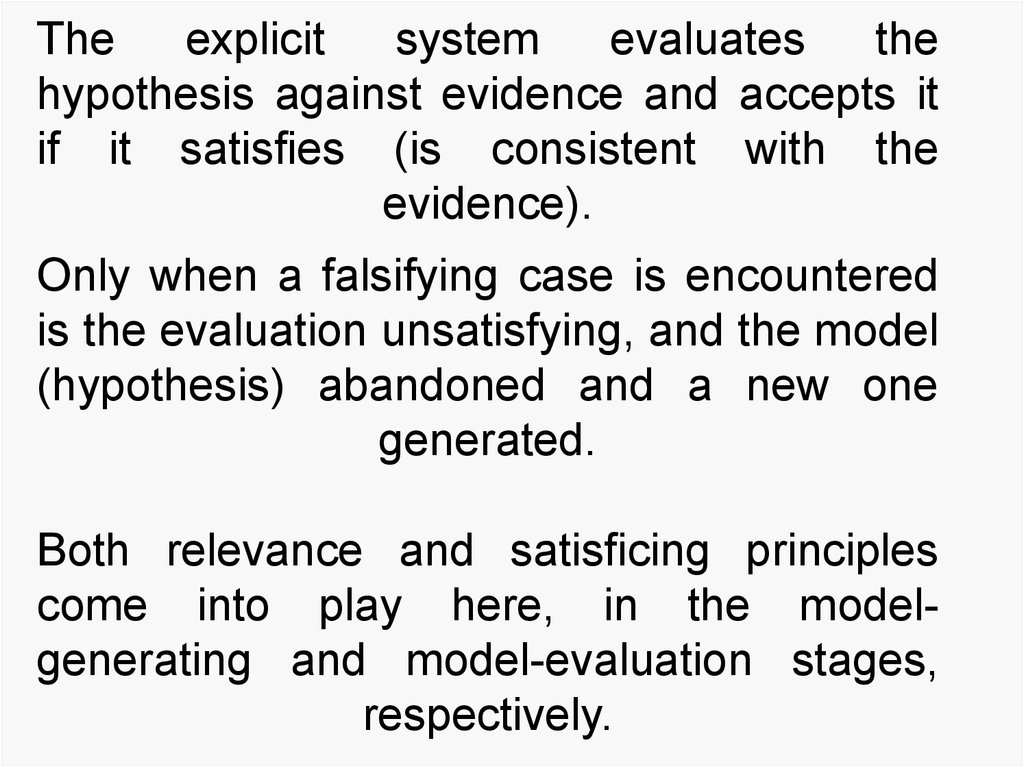






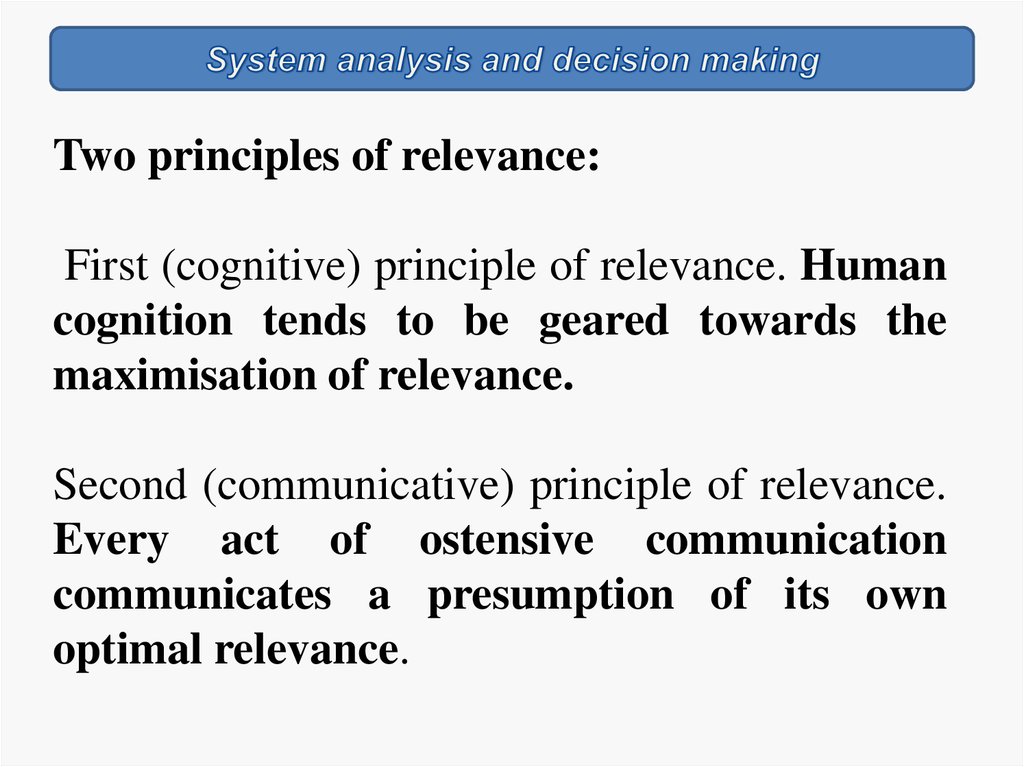






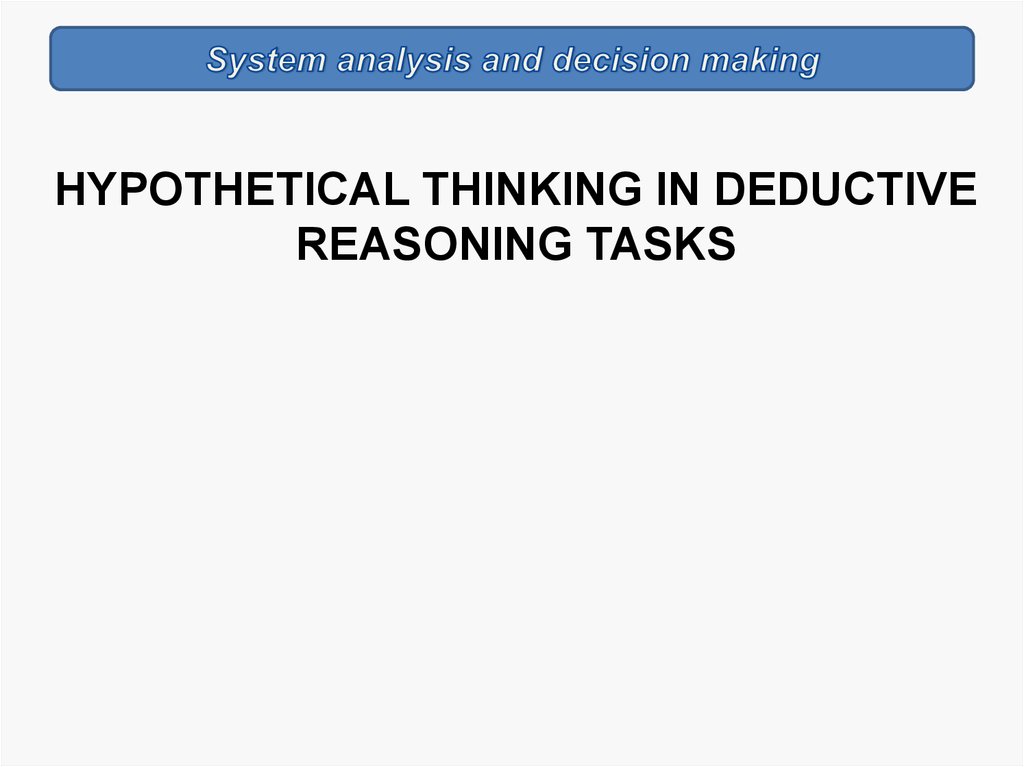











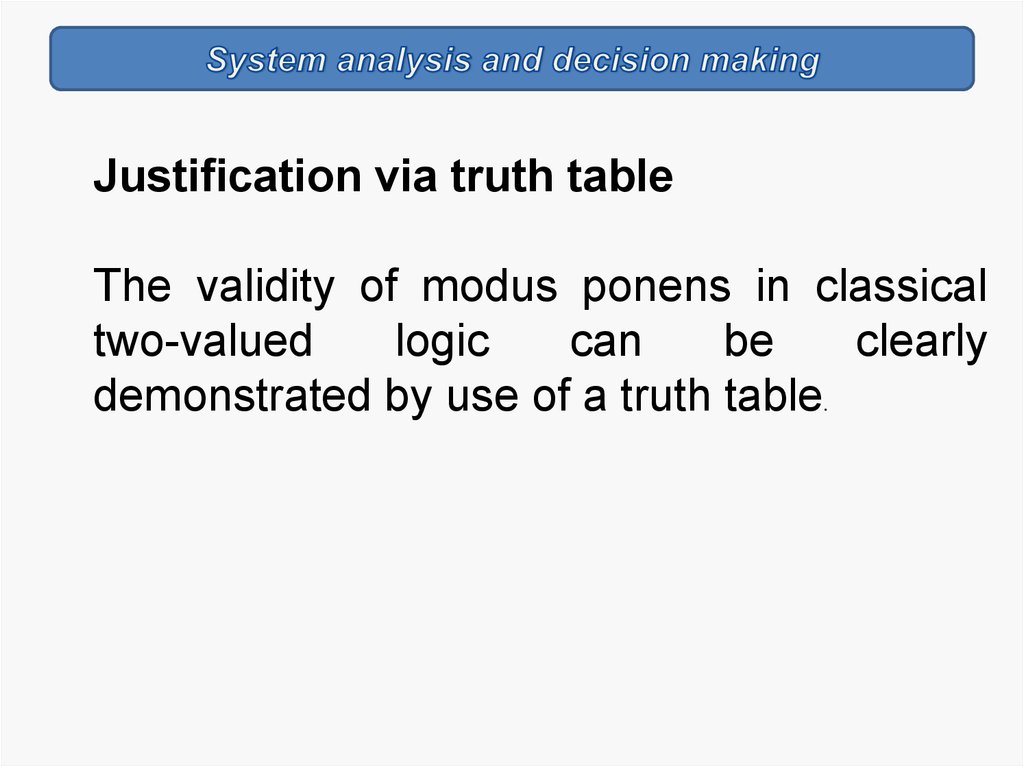

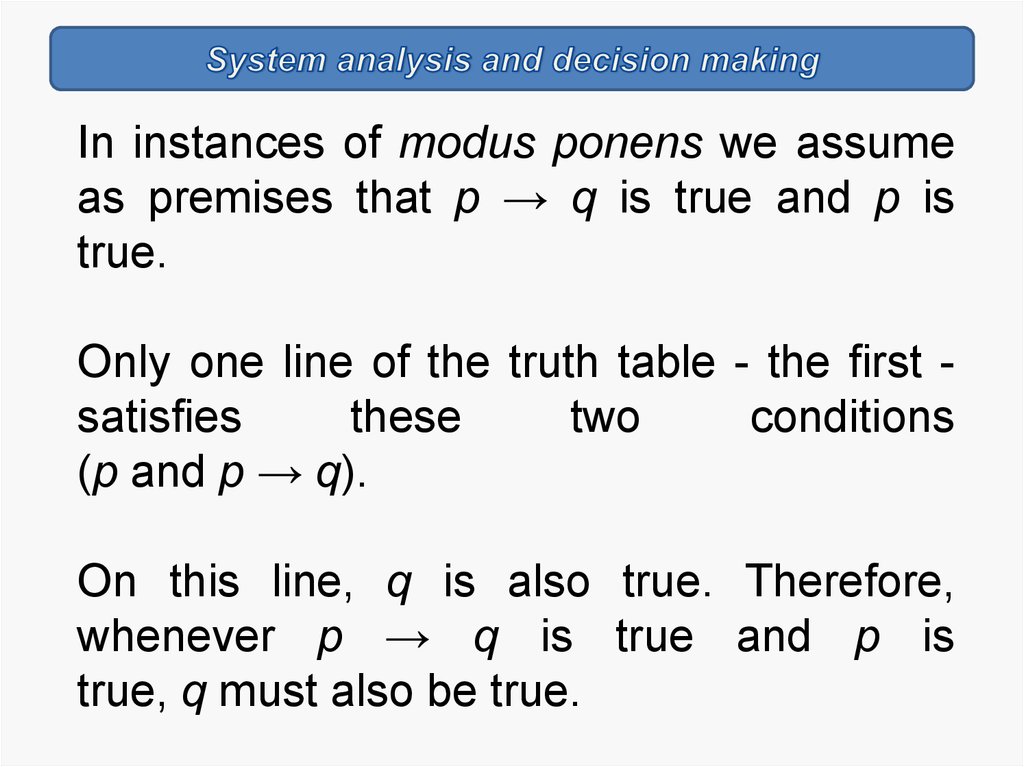


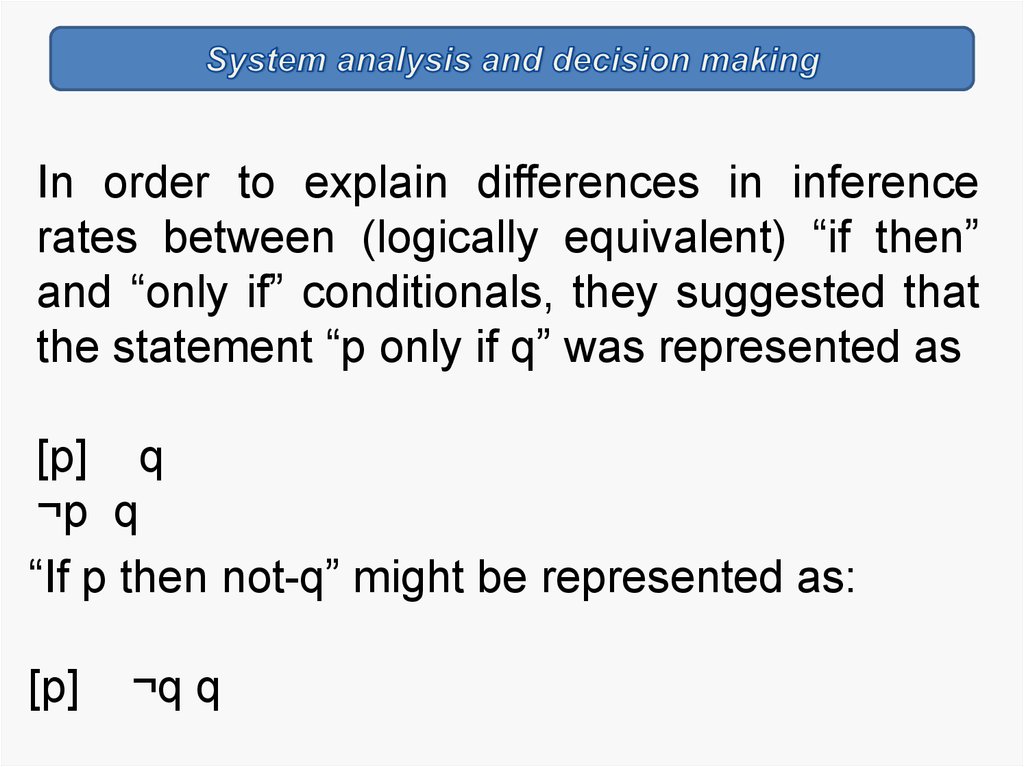


















 psychology
psychology








